The Urban Confluence Silicon Valley Competition
Image ©SMAR Architecture
After several stops and starts, a decision to name the winner of the Urban Confluence Design Competition appears to be nearing its conclusion. In 2017, three founders of a local non-profit established The San Jose Light Tower Corporation (SJLTC). The founders
Read more…
Aerial view of site – Courtesy National Finnish Museum
When major cultural institutions in Finland plan a new building project, one can almost always assume that an open competition will be the vehicle by which the client settles on the building’s design. The only question is, will this be organized
Read more…
SMAR’s Winning Entry Gets the Green Light
Image: ©SMAR Architecture
The winning competition entry in the 2016 Science Island competition in Kaunas, Lithuania by SMAR Architects may only take five years to realize—from the date of the competition to completion. This is encouraging news, as the duration of such projects resulting
Read more…

The Eisenhower Memorial: Sending Mixed Messages? by Stanley Collyer
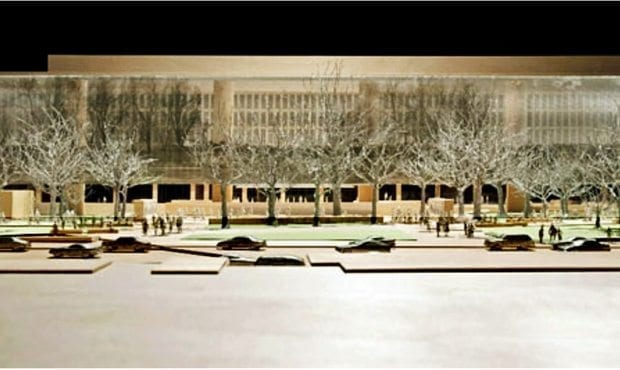
Preface
Since this article was written, several events have occurred which have changed our perception of the final design process. Frank Gehry went back to the drawing board and has modified his memorial design, eliminating some of the columns which we objected to at the edge of the site (January 2011, see above). One may only hope that the tapastry design element, which the Arts Commission still has some reservations about, can be resolved successfully.
More recently, a group called the National Civic Art Society in Washington has issued a call for another Eisenhower Memorial competition for the same site. Apparently stuck on the idea that everything in Washington near the Mall should be in the Beaux Arts traditional style, they take offense that the Gehry design does not meet their standards of what a memorial to Ike should look like. Although probably well-meaning, this group evidently would like to turn back the clock on progress in this field. They would like to erase from memory all the advancements in new materials and ideas which have surfaced and been implemented over the past century. Is it then surprising that not one architect on their board is a national name (Most of their members are laypersons). Although their competition will undoubtedly draw some entries, it should hardly be taken seriously, much less receive any attention from the press. What they are doing is adding nothing to a positive dialogue about architecture in this country—only attempting to set it back by decades. -Ed
Frank Gehry’s preferred idea for the Eisenhower Memorial was one of three proposals which the firm presented in March 2010 to the Eisenhower Memorial Commission after prevailing in the earlier selection process. Although not touted as a pure competition by the Memorial Commission, the original selection process in 2009 was typical of the General Services Administration’s Excellence in Architecture program, often used to adjudicate the design process for government projects such as federal courthouses.
Read more…
An Ideas Competition in Opposition to a Concrete Design
Entry by TheeAe (Image © TheeAe)
In early 2020, a group advocating a new approach to the design of the Los Angeles Museum of Art (LACMA)—The Citizens’ Brigade to Save LACMA—organized a competition to counter an existing design by the Swiss
Read more…
1st Place – gmp Architekten Photo: ©Hans-Joachim Wuthenow, Berlin
As part of a policy to relocate archives of local interest outside of major Bavarian cities, a competition was staged for the design of a new archive in Kitzingen, 12 miles from the provincial capital city of Würzburg, Germany. The competition was
Read more…
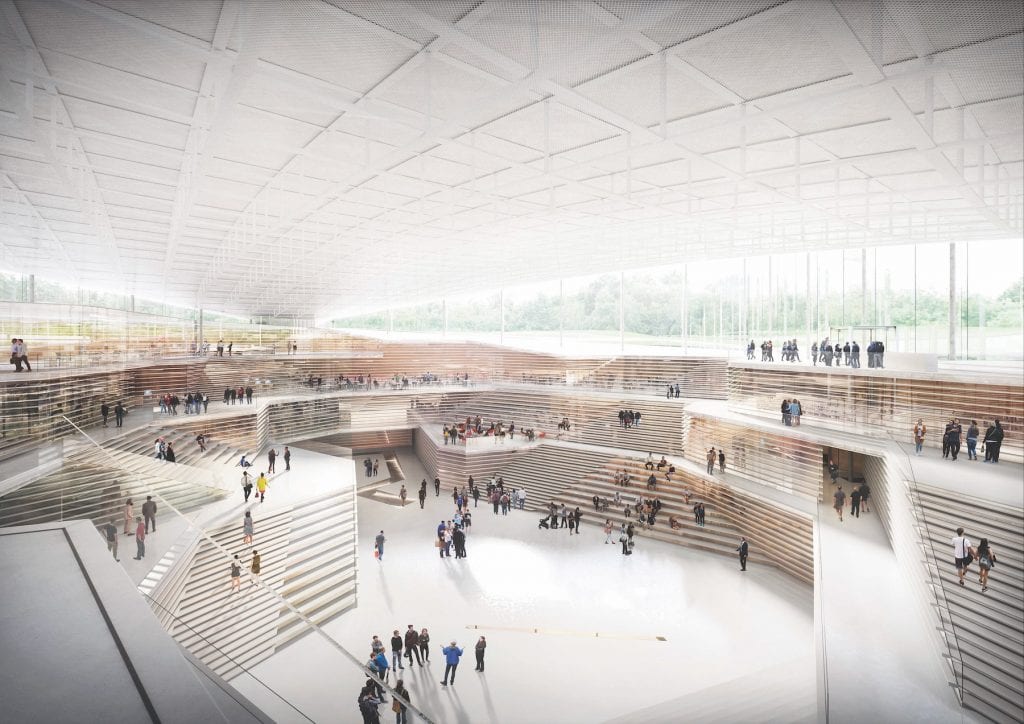
1st Prize Entry by querkraft architekten (Image © querkraft architekten)
Memorials to commemorate atrocities committed by the Nazis during World War II have taken many forms. Holocaust museums such as the United States Holocaust Memorial Museum in Washington, D.C. by Pei Cobb Freed or the Jewish Museum in Berlin by Daniel Libeskind, all endeavor to paint a broad picture, including narratives covering most of the major events and sites. Former concentration camps such as Auschwitz, Dachau, Theresienstadt and Buchenwald have been frequent tour destinations. In the case of Buchenwald, the local city of Weimar has placed pictures of “Witnesses” throughout the downtown area as a reminder of the Nazi legacy.
Read more…
Type: open, international, two-stage Fee: None Language: English
Timetable:
2 September 2019 – Stage 1 deadline
Process and compensation:
The initial phase of the competition invites teams of architects, landscape architects, designers, ecologists and other design-related disciplines to submit designs anonymously, in digital format only. Five concept designs will then be shortlisted for further development.
Read more…
Sponsors: University of Melbourne, in partnership with Australian Institute of Landscape Architects (AILA) Type: Open, international, ideas Location: Melbourne, Australia Eligibility: This competition seeks to enhance the role of landscape architecture and the public realm in Australian cities. However, the competition does not restrict entry to registered landscape architects or those studying within landscape
Read more…
Login to see more (login problems? E: scollyer@competitions.org or http://competitions.org/contact/)
|

Helsinki Central Library, by ALA Architects (2012-2018)
The world has experienced a limited number of open competitions over the past three decades, but even with diminishing numbers, some stand out among projects in their categories that can’t be ignored for the high quality and degree of creativity they revealed. Included among those are several invited competitions that were extraordinary in their efforts to explore new avenues of institutional and museum design. Some might ask why the Vietnam Memorial is not mentioned here. Only included in our list are competitions that were covered by us, beginning in 1990 with COMPETITIONS magazine to the present day. As for what category a project under construction (Science Island), might belong to or fundraising still in progress (San Jose’s Urban Confluence or the Cold War Memorial competition, Wisconsin), we would classify the former as “built” and wait and see what happens with the latter—keeping our fingers crossed for a positive outcome.
Read More…
Young Architects in Competitions
When Competitions and a New Generation of Ideas Elevate Architectural Quality
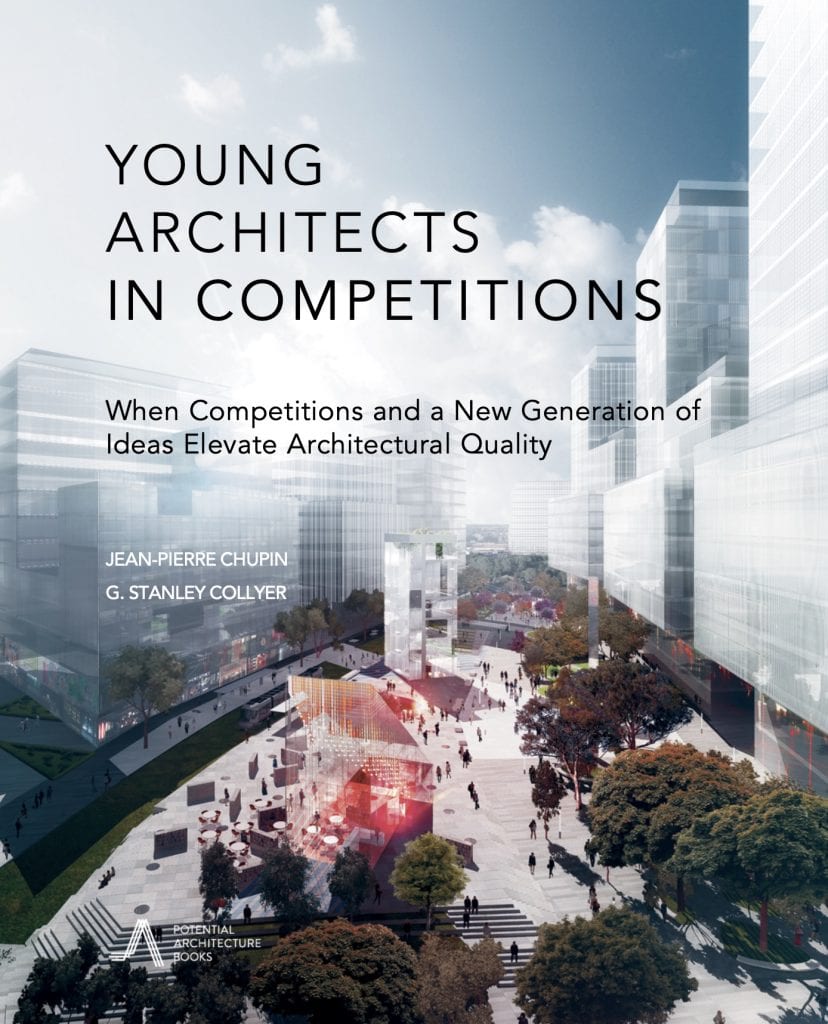
by Jean-Pierre Chupin and G. Stanley Collyer
published by Potential Architecture Books, Montreal, Canada 2020
271 illustrations in color and black & white
Available in PDF and eBook formats
ISBN 9781988962047
What do the Vietnam Memorial, the St. Louis Arch, and the Sydney Opera House have in common? These world renowned landmarks were all designed by architects under the age of 40, and in each case they were selected through open competitions. At their best, design competitions can provide a singular opportunity for young and unknown architects to make their mark on the built environment and launch productive, fruitful careers. But what happens when design competitions are engineered to favor the established and experienced practitioners from the very outset?
This comprehensive new book written by Jean-Pierre Chupin (Canadian Competitions Catalogue) and Stanley Collyer (COMPETITIONS) highlights for the crucial role competitions have played in fostering the careers of young architects, and makes an argument against the trend of invited competitions and RFQs. The authors take an in-depth look at past competitions won by young architects and planners, and survey the state of competitions through the world on a region by region basis. The end result is a compelling argument for an inclusive approach to conducting international design competitions.
Download Young Architects in Competitions for free at the following link:
https://crc.umontreal.ca/en/publications-libre-acces/

RUR model perspective – ©RUR
New Kaohsiung Port and Cruise Terminal, Taiwan (2011-2020)
Reiser+Umemoto RUR Architecture PC/ Jesse Reiser – U.S.A.
with
Fei & Cheng Associates/Philip T.C. Fei –R.O.C. (Tendener)
This was probably the last international open competition result that was built in Taiwan. A later competition for the Keelung Harbor Service Building Competition, won by Neil Denari of the U.S., the result of a shortlisting procedure, was not built. The fact that the project by RUR was eventually completed—the result of the RUR/Fei & Cheng’s winning entry there—certainly goes back to the collaborative role of those to firms in winning the 2008 Taipei Pop Music Center competition, a collaboration that should not be underestimated in setting the stage for this competition.
Read more…

Winning entry ©Herzog de Meuron
In visiting any museum, one might wonder what important works of art are out of view in storage, possibly not considered high profile enough to see the light of day? In Korea, an answer to this question is in the making.
It can come as no surprise that museums are running out of storage space. This is not just the case with long established “western” museums, but elsewhere throughout the world as well. In Seoul, South Korea, such an issue has been addressed by planning for a new kind of storage facility, the Seouipul Open Storage Museum. The new institution will house artworks and artifacts of three major museums in Seoul: the Seoul Museum of Modern Art, the Seoul Museum of History, and the Seoul Museum of Craft Art.
Read more…
Belfast Looks Toward an Equitable and Sustainable Housing Model
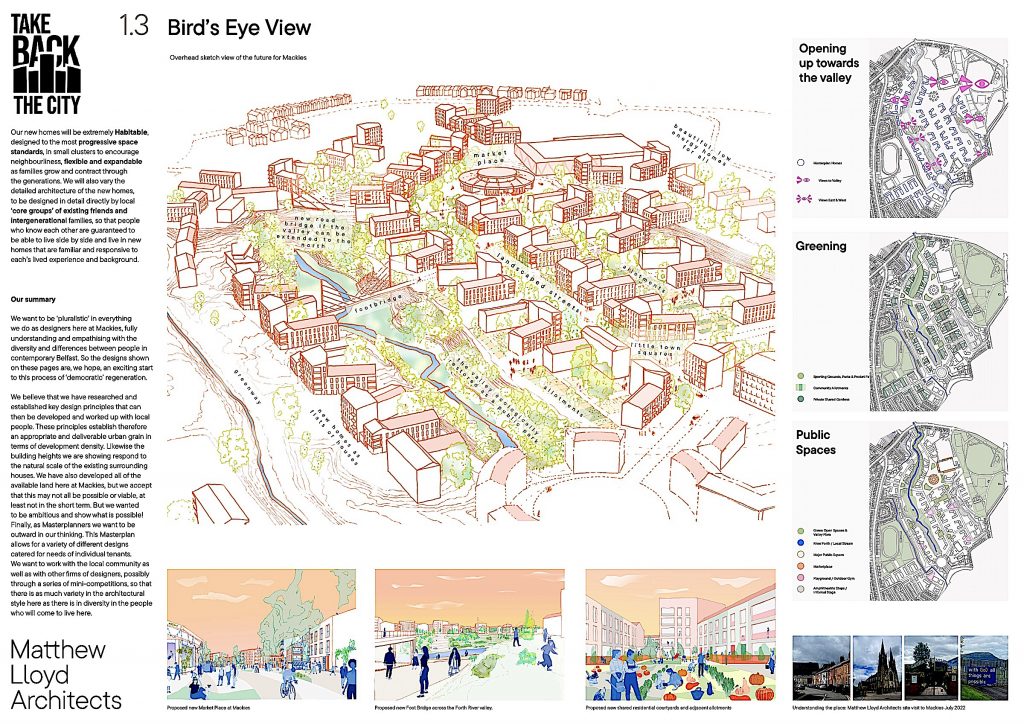
Birdseye view of Mackie site ©Matthew Lloyd Architects
If one were to look for a theme that is common to most affordable housing models, public access has been based primarily on income, or to be more precise, the very lack of it. Here it is no different, with Belfast’s homeless problem posing a major concern. But the competition also hopes to address another of Belfast’s decades-long issues—its religious divide. There is an underlying assumption here that religion will play no part in a selection process. The competition’s local sponsor was “Take Back the City,” its membership consisting mainly of social advocates. In setting priorities for the housing model, the group interviewed potential future dwellers as well as stakeholders to determine the nature of this model. Among those actions taken was the “photo- mapping of available land in Belfast, which could be used to tackle the housing crisis. Since 2020, (the group) hosted seminars that brought together international experts and homeless people with the goal of finding solutions. Surveys and workshops involving local people, housing associations and council duty-bearers have explored the potential of the Mackie’s site.” This research was the basis for the competition launched in 2022.
Read more…
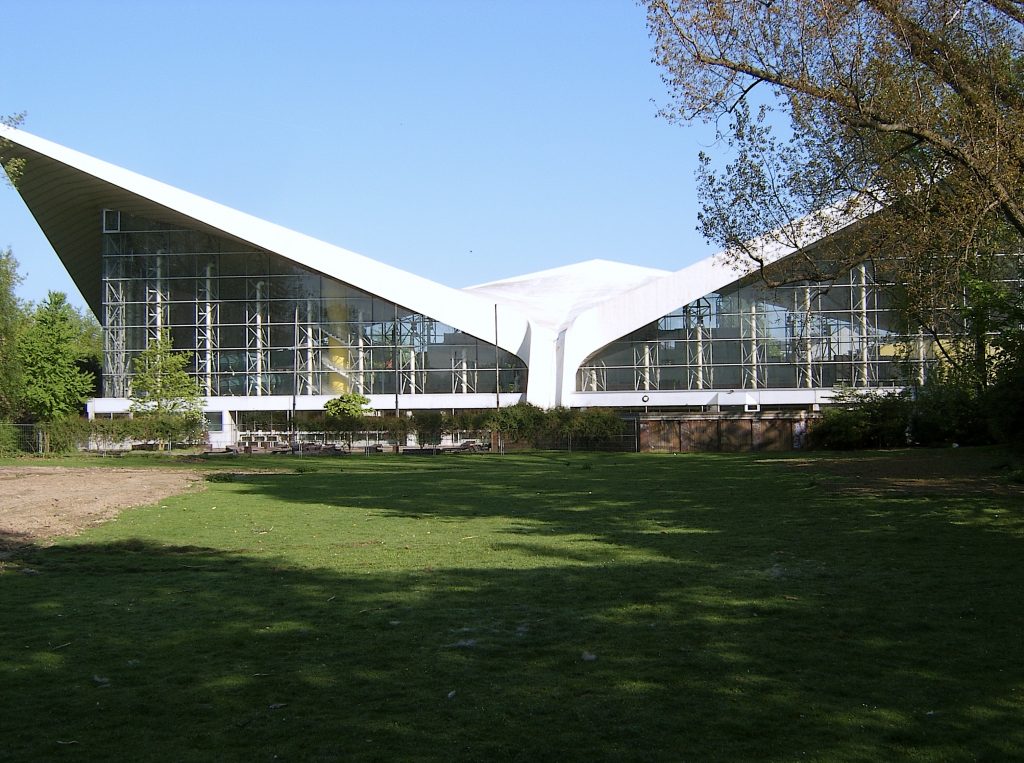
Alster Swimming Pool after restoration (2023)
Linking Two Competitions with Three Modernist Projects
Hardly a week goes by without the news of another architectural icon being threatened with demolition. A modernist swimming pool in Hamburg, Germany belonged in this category, even though the concrete shell roof had been placed under landmark status. When the possibility of being replaced by a high-rise building, it came to the notice of architects at von Gerkan Marg Partners (gmp), who in collaboration with schlaich bergermann partner (sbp), developed a feasibility study that became the basis for the decision to retain and refurbish the building.
Read more…
|




































